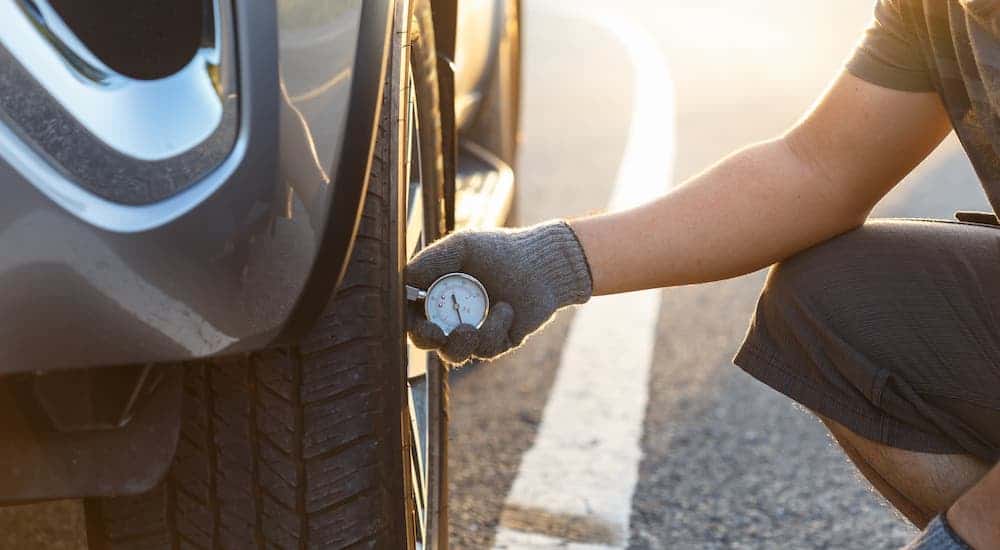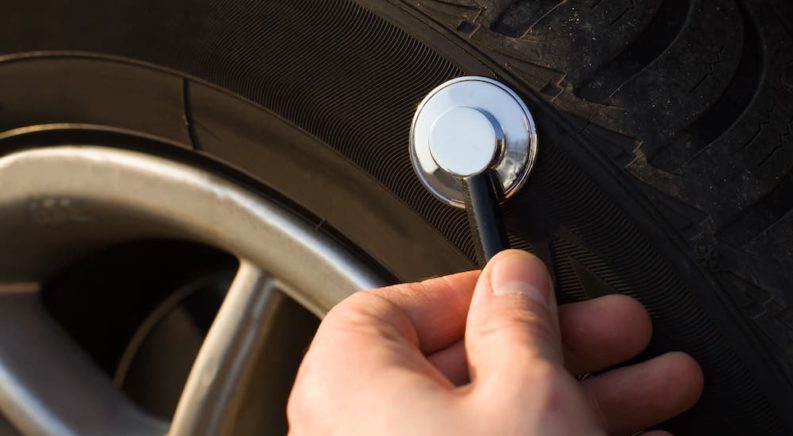You’ve probably heard the phrase “where (or when) the rubber hits the road.” While that phrase typically refers to making sure a plan works in reality, the concept itself is very real. Your tires are some of the most important equipment on your vehicle. A tire blowout can be a serious problem, depending on when and where it happens. Yet the average driver spends relatively little time thinking about the rubber, and more time worrying about the road.
For many drivers, tires are something that don’t receive attention until they demand attention. Proper tire maintenance is actually crucial to the lifespan of not just the tire, but of the vehicle as a whole. Taking good care of your tires is not just a good idea for extending the life of your tires and vehicle. Well-maintained tires can also improve overall fuel economy and offer more stable handling of the vehicle.
Tires create friction between your vehicle and the road, which means they’re a vital part of braking, accelerating, maneuvering in inclement weather, and staying balanced in turns. It might be time to check your tire knowledge, followed by a thorough check of your tire!
The Parts of a Tire

The first thing to add to your tire vocabulary is its parts. Contrary to popular belief, a tire is not just a big round strap of rubber!
At the inside of the tire are the beads, which hold the tire to the wheel. The beads prevent the tire from sliding around the wheel when your car is in motion, so they’re constructed in a way to really hold the tire tightly to the wheel. In most cases, they’re made of high tensile steel wires plated in brass, copper, or bronze, wound up into a rubber band.
Inside the beads is what’s known as “bead filler.” Typically, this is a rubber compound and serves to add stability to the beads and sidewalls. The sidewall is the actual side of the tire, from the tread to the beads. This is actually a protective covering. Most importantly, tire information is printed on the sidewall, including the size of the tire, how much of a load it can handle, and its speed rating.
Underneath the sidewall, you’ll find the radial cord body, which is a polyester type material called “cord plies” coated with rubber. The radial cord body helps transfer the force upon a tire and wheel body when turning corners. Bonded to the inside of the cord body is the inner liner, a rubber layer that assists in keeping air inside the tire.
Above the cord body, you’ll find another layer or two of cord called “belt plies.” Not only do these steel cords assist in preserving tire tread, but they also improve traction and resistance to impact on uneven or unmaintained roads.
The outermost portion of the tire––the actual place where the rubber literally hits the road––is called the tread. Tread provides traction when braking, steering, and accelerating. Different types of tread have different jobs. For example, all-terrain tires can wind their way through muddy, wet, and sandy conditions, while performance tires will have special tread in order to help them accelerate more rapidly with just the right amount of traction.
The Importance of Regular Tire Inspection
In order to increase the lifespan of your tires, it’s important to inspect them regularly. The good news is that, unlike most car repairs, checking your tires is something you can do very simply in your own driveway or garage!
Most modern vehicles have computers that alert us when our tires are running low, but it’s not a bad idea to eyeball your vehicle from a distance to make sure all four tires are sitting level. Your vehicle will drive best when all tires are performing equally. You can take a quick manual tire pressure with a tire gauge to make sure all four tires are in a similar state. A tire gauge can be picked up at a gas station, auto parts store, or even large chain department stores.
Just as importantly, make sure there are no bulges in your tires. This can mean a failure of something within the inner workings of your tire. Damage anywhere in a tire is a reason to have it replaced because what looks like minor damage now can lead to a huge blowout later down the road.
Next, get up close and personal with your tires to check the tread and wear patterns. A deeper tire tread means greater traction and control, even when the roads are wet. Your tire treads should always be between 10/32” and 12/32”.
One popular way to determine if your tread is deep enough is the Penny Test. Take a typical penny and insert it head first, on its edge, into the tread. If you can see the top of Abraham Lincoln’s head, your tires don’t have enough tread, and it’s time to start shopping for replacements.
Even if Lincoln has a sufficient amount of tread covering his head in one place, make sure you take a look at the tread depth and wear patterns all the way around your tire. If there’s more wear on the middle of your tires, your tires can be overinflated. If the sides of the tread are more worn, your tires could be underinflated. If one side is worn over another, your vehicle may be out of balance and alignment.
Tire Maintenance Tips
If your tires are showing signs of uneven wear, that is a good sign that you are overdue for a tire rotation.
Most mechanics recommend rotating your tires every 5-7,000 miles to ensure they wear evenly on all surfaces. If you have a front-wheel drive vehicle, the chances are high that the front tires will wear much faster than the rear tires. By rotating the tires front to back, you have a better chance of achieving equal wear on all four tires, thus increasing the lifespan of all four tires.
You’ll also want to double-check the alignment when having tires rotated. This will help your vehicle maneuverability, as well as assist in a more even tire wear.
It may seem intuitive, but also make sure your tires are inflated to the level where they ought to be, not the maximum amount of tire pressure your tires can withstand. If your “low tire” light comes on, make sure that you stop to add air very soon. Not only can a low tire result in decreased fuel economy, but it can also result in additional pressure on the interior structure of the tire, possibly permanently damaging it or leading to a blowout.
Make sure your vehicle and tires are being used as recommended. When your car, truck, or SUV was designed, all pieces were engineered as parts of a whole. That means that steering, handling, braking, and all overall performance details were based on a specific size and type of tire. If you are considering any changes––such as lifting a truck or putting low-riders on a car––make sure you’re doing so within the manufacturer’s recommendations. Otherwise, additional work may need to be done to ensure your vehicle is able to perform correctly with a different wheel size.
Additionally, bear in mind the workload you put on your vehicle. Some tires are made to regularly handle gravel roads full of potholes, while others might only be able to handle rough terrain on the rarest of occasions. If you’re going to be towing or moving a heavy payload, make sure the tires have a high enough load rating for the job. One easy way to lose a tire is to simply ask it to do more than it can handle.
Keep an Eye on Your Tires
Tires are some of the most important components of our vehicles, and yet often the most ignored until catastrophe means we can ignore them no longer! By understanding the makeup of your tires, and knowing the signs of trouble, you’ll be able to identify when you might need to take a trip to the mechanic. By keeping an eye on your tires for bulges, uneven wear, and low tread, you’ll be able to extend the lifespan of your tires, and, in turn, of your vehicle.

